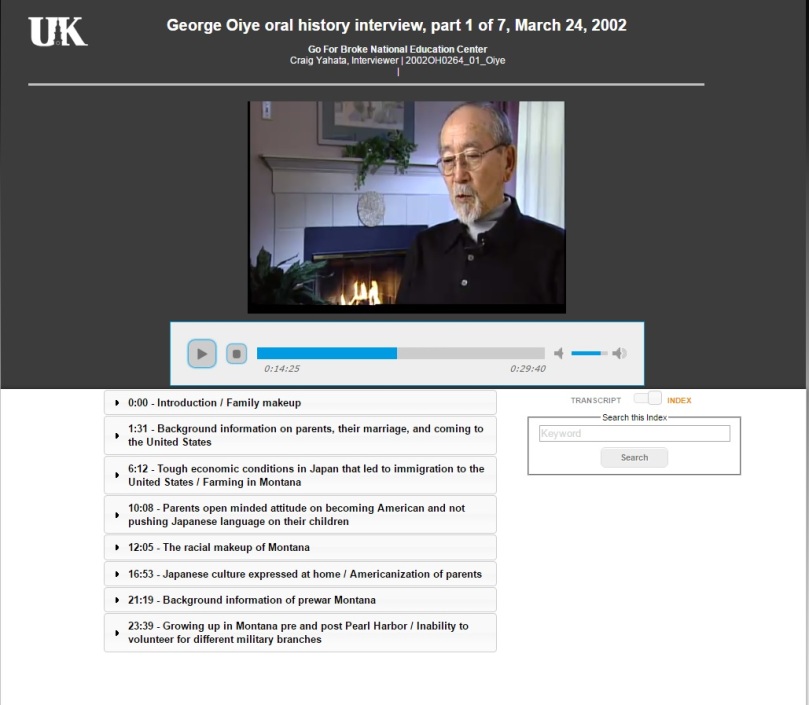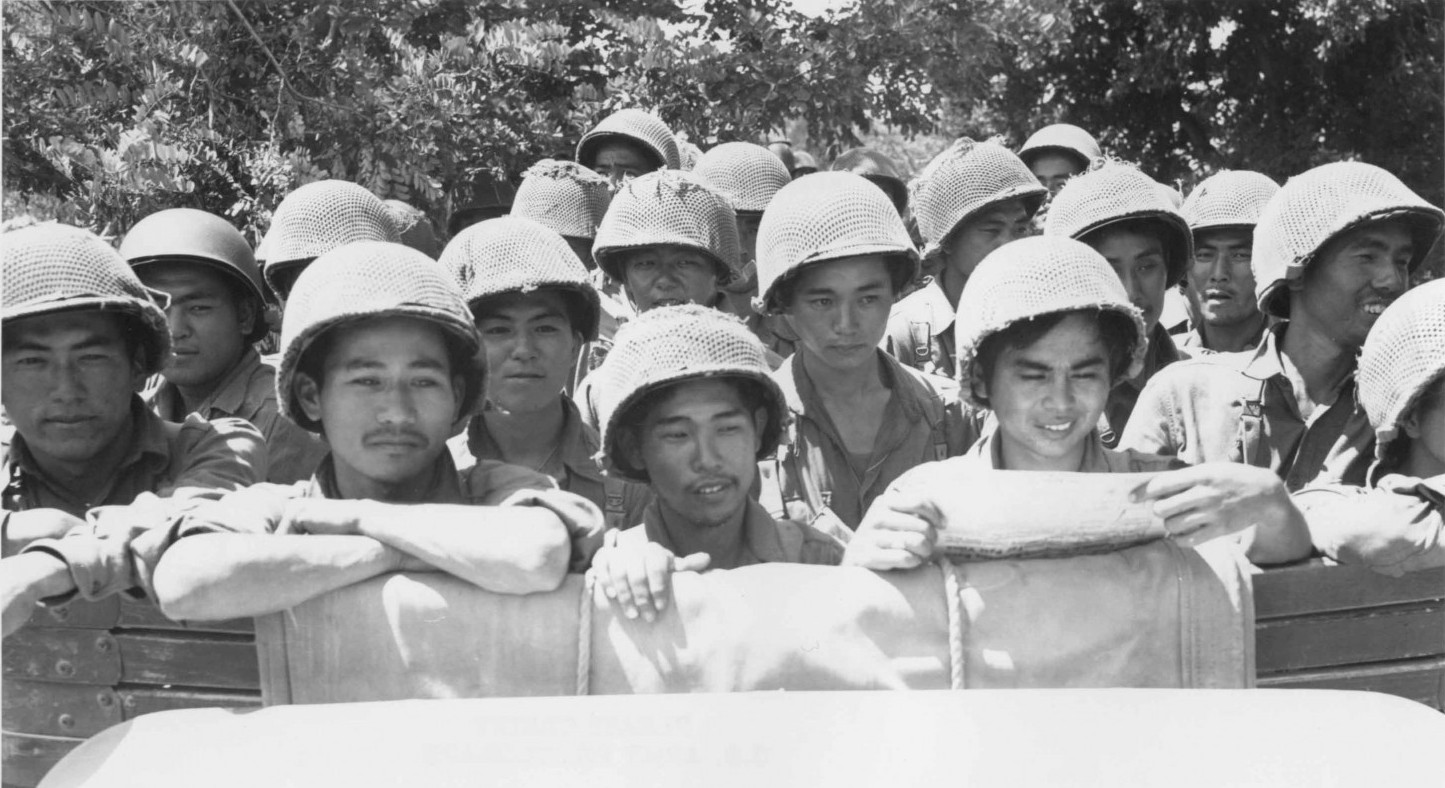My experience with the Oral History Metadata Synchronizer, so far, has been a very interesting experience. I come from an English education degree background, so I have never dealt with anything like this before. I have used similar tools and other resources that utilized oral histories and interviews, but I have never worked on this side of the computer screen.
I have really enjoyed actually watching the interviews and seeing the facial expressions of each of the Nisei veterans change with the story they are telling. It never ceases to amaze me how vivid and strong these stories are after all of these years. I also really like how user friendly the OHMS system is. After the first interview, I knew exactly where to go when I was looking to update the summary or when I needed to revise an interview video I had already worked on. The layout of the system and the tools available are very intuitive and easy to follow.
The only thing I have a complaint about, and it is a small one, would be the separation of the metadata and the actual interview. I understand why it was done, as to make it easier to organize, but having to exit a menu to go to another menu to edit the summary can sometimes be a little bit irritating. What can I say though, I am from a generation that desires instant gratification and streamlined user interfaces. Again, this is a minor, minor, minor inconvenience and I understand why it was put in place.
Being new to indexing and using a tool like OHMS, I have learned a great deal. As I have previously stated, I am used to doing research papers that require the use of first hand accounts of information. Besides written memoirs, the next best thing is interview clips or audio clips. I am just fascinated with not only each of the men’s wartime experiences, but their family lives as well. I have learned so much in such a short time, but I would say the biggest thing I have learned is how specific a keyword can be, when compared to segment titles or other information. This concept took a while for me to grasp with a tight grip, and I am still finding myself being too encompassing in certain respects and missing too many details in others. This is an involved process that will take more time than I initially anticipated, but it has been a fun journey so far.
I definitely can feel overwhelmed by the impact our work can have on the future generations. The legacies of each of the men who were interviewed will, unfortunately, be forgotten if we do not do a great job of preserving their story. For the families, students, and future generations, the indexing done for these oral history interviews is an amazing resource and project to be a part of. I originally started this internship because I had a personal connection, but I now want to continue this work to help anyone else who is interested in learning about these great men and the sacrifices they endured for our country. Finally, my advice would be just to soak it all in, and take the time to really appreciate the legacy and the history you are watching. It may seem cliched, but once these brave men pass away, their stories would live on only through their families if we did not have this amazing resource. Take full advantage of it and learn from your mistakes. Don’t be petrified to record too much or paralyzed and record too little. The best way to learn is hands on experience and learning from your mistakes. Take that dive off the deep end and then take the time to go over it with someone more experienced to learn how you can improve.


